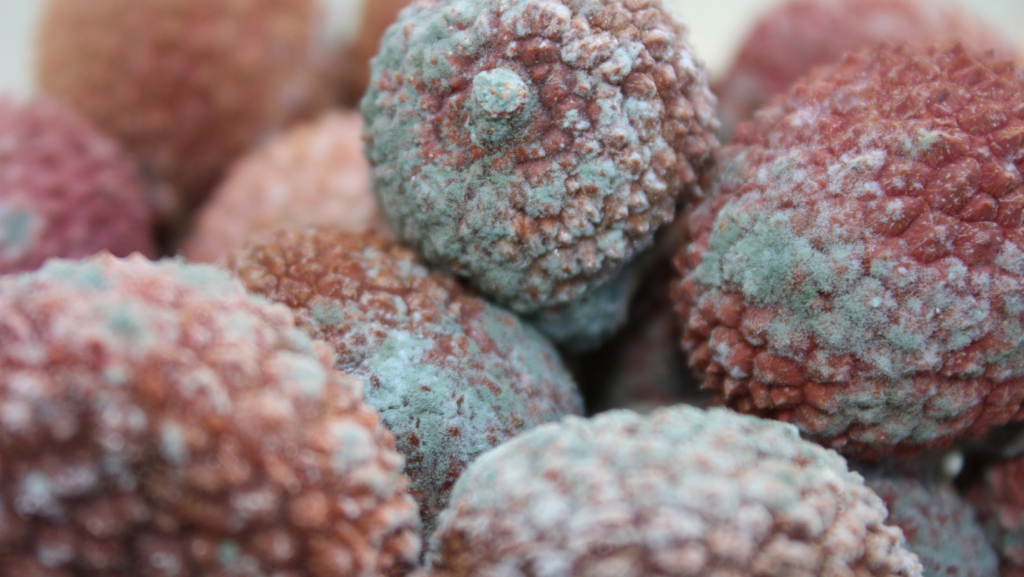How Long Does It Take for Any Food to Mold?
Tiny mold spores are all around us in the air, which is not harmful to our health in moderation. Once a spore lands on a surface, it searches for water and nutrients to feed off of. Food is able to grow mold easily because it is often kept in the perfect environment to foster mold growth. The temperature is usually about right, the air quality is good, and the food itself provides the nutrients and water the mold needs in order to grow.
As the spore takes root, it begins to spread and create more spores and spread quickly on the surface of your food. Some molds can take over your food in a matter of 12 to 24 hours, while others may take weeks.
What are the conditions for mold growth?
Mold needs four things in order to grow: water, food, suitable air quality, and temperature. Food that contains any kind of water or fluid is susceptible to mold growth. In addition, mold can only grow if it has food readily available to feed itself and grow.
Mold is a fungus that feeds off of dead or dying organic matter and can be destructive to your health and food quality. Mold will grow best in damp, dark, and cool conditions, but can also grow in warmer temperatures as well. Mold grows best between 55 to 70 degrees Celsius.
What are the dangers of mold on food?
Mold can be very dangerous if eaten. Mold is perhaps most common on bread, cheese, and fruits and vegetables left out in the kitchen. Eating mold on any item has the potential to make you very sick.
Simply cutting off the moldy part does not render the food safe to eat. Mold has the ability to penetrate deep into the food and not just fester on the surface. If you do spot mold on your food, it is best to inspect the entire serving and not just one spot. In addition, if the food you are eating is part of a package of multiple servings, you should check all of the – mold can spread very quickly and infest an entire package of food.
How long does it take for mold to occur on bread?
Bread in general molds within three to seven days. The length of a loaf’s shelf life depends on its ingredients, type, and storage method. Out of all kinds of bread, organic white bread develops mold quickest. Mold grows quickly on organic white bread because it does not have preservatives compared to store-bought loaves.
As such, you can expect white bread to develop mold within three days at room temperature and exposed to moisture. In proper containers, white bread may last longer.

Why does mold grow on bread?
Mold is everywhere. Mold is a fungus that releases spores into the air, looking for a place to spread. Once it lands on damp organic material, mold begins feeding and spreading. You can see mold growth when it eventually forms velvety patches. The colors of these patches can range from blue, green, and black. The speed of mold growth depends on the bread’s acidity, moisture, and preservatives.
The climate also plays a part in its development and spread. Most kinds of bread are non-acidic and have a pH level of around seven. Compared to white bread, sourdough has a higher acidity level.
As such, sourdough bread develops mold much slower than white bread. Climate and moisture also play a massive part in how fast loaves of bread mold. Mold thrives in damp and humid environments. With that said, leaving bread exposed to air and moisture will cause it to develop mold quicker.
How long does it take for mold to occur on vegetables?
As the spore takes root, it begins to spread and create more spores and spread quickly on the surface of your food. Some molds can take over your food in a matter of 12 to 24 hours, while others may take weeks.
Molds are microscopic fungi that live on plant or animal matter. Mold grows from tiny spores that float around in the air. When some of these spores fall onto a piece of damp food, they grow into mold. Food mold feeds itself by producing chemicals that make the food break down and start to rot.
How long does it take for mold to occur on cake and pastries?
The shelf life of the cake depends on a variety of factors, such as the sell-by date, the preparation method, and how the cake was stored. Because of its relatively low cost and high-calorie density, the cake is one of the most popular celebration desserts in the world. It is a traditional dessert in most cultures for birthdays, and it is so versatile that it can be prepared in many different ways.
Like bakery cake in the pantry last for 1 to 2 days, in the fridge, it lasts for 2 to 4 days, while in the freezer is 2 to 4 months. Cake with fresh fruits will last for 1 to 2 days in the fridge and 2 to 4 months on the freezer and cake with whipped ice cream last for 1 to 2 days in the fridge.

How to tell if the cake is bad or moldy?
Practicing proper hygiene and food safety techniques will help prevent foodborne illness. Although not a perfect test, your senses are usually the most reliable instruments to tell if your cake has gone bad. Some common traits are a hard and dry texture as the moisture evaporates. Sometimes mold can appear, so always be on the lookout for that.
Fruit fillings may also become moldy or slimy which indicates that the cake has gone bad. There are, of course, certain health risks associated with spoiled foods so always remember to practice food safety and enjoy your foods before their shelf life has expired.
How long does it take for mold to occur on rice?
The shelf life of dry or uncooked rice varies depending on the type of rice. Dry white rice may last for up to 2 years if kept at room temperature, while brown rice only lasts about 6 months. Refrigerating and freezing them increases their shelf lives. Cooked rice must be refrigerated, and it keeps for about 4 days. It may also be frozen for longer.
Although there are many types of rice, the main difference when it comes to shelf life is between white and brown rice. Because brown rice is not milled or polished, it has a higher oil or fat content. Therefore, it may become rancid more quickly than white rice. White rice can stay up to 2 years before it can mold, brown rice is 3 to 6 months from the date of manufacture.
Also, note that refrigerating and freezing may significantly extend both their shelf lives.
How long does it take for mold to occur on food in the refrigerator?
Think your humid fridge drawers. Mold can start developing in as soon as 24 hours, especially if the food is a few days old. Foods like cheeses, mushrooms, loaves of bread, meat or fish, and milk are very susceptible to mold.
Mold tends to favor salty and sugar foods like jams and cured meats, like salami. You also tend to see it on fruits, vegetables, cheese, yogurt, and sour cream. And foods that contain any kind of water or fluid are susceptible to mold growth, as molds and fungi thrive in a dark, moist environment.

How long does it take for mold to occur on fried food?
All cooked foods and leftovers can be kept in the refrigerator for three to four days after cooking. After that, they can start to spoil. Your fried food will start to mold after three to four days, so it’s necessary you try everything possible not to make your fried food mold.
Why do strawberries mold so fast?
Mold can start growing very rapidly, that’s because there are mold spores in the air all the time. As soon as mold spores find a warm and wet environment they multiply quickly. Strawberries also soak up moisture easily, making them ideal for mold spores to settle. And that mold can spread through a whole basket of berries fast – causing strawberries to deteriorate significantly within 48 hours of picking.
Strawberries are among the most perishable fruits. They are also very sensitive to light and heat which makes them go bad faster than other fruits.
How to prevent mold on strawberries?
To keep your strawberries from getting moldy, and extend their shelf life: Do not wash them until ready to eat; properly stored, strawberries will keep for about 5-7 days in the fridge. You can easily kill mold and bacteria with a vinegar and water bath to maximize their shelf life. Discard any bruised or moldy strawberries before refrigerating them.

How do keep strawberries from getting moldy with vinegar?
Discard any moldy strawberries. Place your strawberries in a large bowl. Then combine 4 cups cold water and 1 cup white vinegar and pour into the bowl.
Soak for a few minutes, then, gently swish around for a minute to dislodge dirt and let the vinegar kill spores and bacteria. Drain the vinegar/water liquid, then, rinse with cold water until the vinegar aroma is gone. Spread them onto paper towels or kitchen cloth to gently dry them. Strawberries are highly perishable. They don’t last as long as apples, pears, and oranges. Another reason why strawberries spoil quickly is that they are also very sensitive to moisture and heat.
How to slow mold on any food?
To prevent mold growth, empty open cans of perishable food and place them into clean storage containers with a cover, refrigerating immediately. Keep food covered and in the refrigerator when you’re not eating it. “Mold growth is increased when foods sit at room temperature for over several hours.







